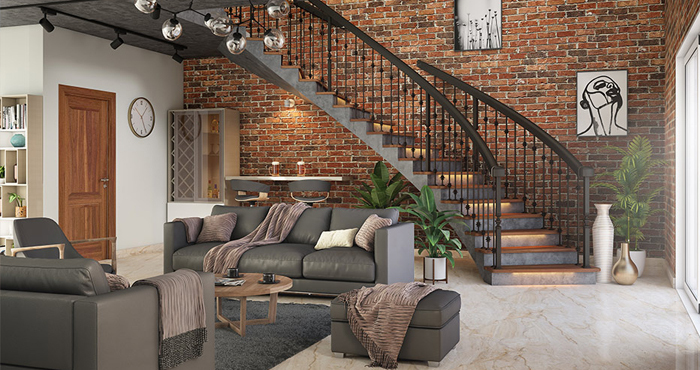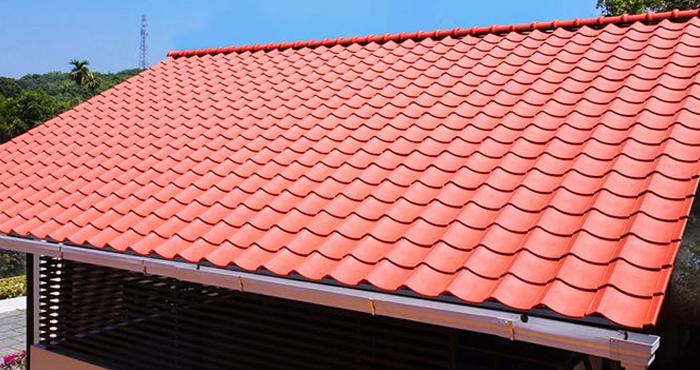We all have a question in our mind- what are brick bonds? In simplest terms, a brick bond is a pattern in which the bricks are laid. Brick bonds play a huge role in maximising the strength and durability of the structure. Different types of brick bonds bring uniformity to the structure and composition, enhancing the visual appeal. The types of brick bonds have their own unique look, challenges of installation, and structural considerations in the case of walls. This blog discusses the most popular ones.
10 Different Types Of Brick Bonds
Brick walls can be structural, like load-bearing walls, or they can also be primarily decorative, like a brick-veneer wall. Structural walls demand solid structural bonds, while decorative walls can use any bond pattern. Let’s take a look at the different types of brick bonds.
Stretcher Bond
Stretch bonds are the most commonly used types of brick bonds, also known as running bonds. This bond is one of the most utilised and is very simple to lay. A stretcher bond is appropriate when building walls that are half the thickness of a brick. But these bonds need to be better suited for standalone structural walls. This bond will fail if the wall thickness exceeds 50% of the total brick length.
Header Bond
The brick’s shorter face is called a header. In header bond brick masonry, the header course is where all the bricks are built. In this bond, the overlap is carried out by the bricks’ half-width. In alternative courses, the three-quarter brickbats are used as quoins. One-thick brick walls are typically built using this bond.
English Bond
Frequently used in masonry projects, this bond comprises alternating courses of stretchers and headers. Each alternate row is vertically aligned, and the headers are placed in the centre of the stretchers in the course below. After the initial header, a quoin closer is placed at the beginning and end of a wall to break up the continuity of vertical joints. A brick sliced half lengthwise and placed in the corners of brick walls is known as a quoin close. This kind of bond is typically utilised to build sturdy walls that are one brick thick.
Flemish Bond
Each course for this kind of bond comprises alternate headers and stretchers. Every alternate course starts with a header in the corner, and each header is centred on a stretcher above and below. In alternate courses next to the header, quoin closers are added to break the vertical joints in the succeeding courses. Flemish Bond walls are difficult to build and require more expertise.
Stack Bond
All the bricks in a stack bond are simply stacked on top of one another and held in place using mortar, with all bonds aligned. Stack bonds are ideal for ornamental reasons due to their weak brick structure and reduced strength. Since this connection is not structural, it cannot be used for walls that must transfer loads.
Dutch Bond
A modified version of the English cross bond, the Dutch Bond uses alternate courses of stretchers and headers. Every stretching course starts at a quoin with a three-quarter bat in this arrangement of the brick bond. A header is placed adjacent to the three-quarter bat brick at the quoin on each alternate stretching course. This connection makes it easy to build sturdy corners along walls that take on extra weight.
American Bond
This bond and the English Bond are extremely similar, except in this bond, courses of headers are placed every five or six courses. In essence, this header bond serves as a tie brick between the backing and the frosting. At both ends of the header courses, queen closers are inserted to create the necessary offset in a typical common bond.
Facing Bond
This bond is typically used to build thick walls when the facing and backing are built using bricks of various thicknesses. This connection often comprises structured stretching and heading courses so that a heading course occurs right after a number of stretching courses. Due to the disparity between the facing and the total number of joints in the backing, the weight distribution of walls utilising this bond varies. Additionally, this may cause the two wall thicknesses to settle at different rates.
Diagonal Bond
This bond is applied every fifth or seventh course along the wall’s height and is best for walls that are two to four bricks thick. In this bond, the bricks are arranged end to end so that the stretchers are still in contact with the extreme corners of the sequence.
Rat Trap Bond
Instead of being set horizontally as they often are, bricks in this bond are either laid on edge or positioned vertically. As a result, the wall develops a cavity (hollow space). This feature aids in maintaining improved thermal comfort and maintains inside temperatures lower than exterior temperatures and vice versa. Because of the internal cavity, this form of wall uses less material. The Rat Trap Bond resembles the Flemish Bond in appearance rather closely. To create this relationship, expert effort and special care are required.
Conclusion
Jindal Mechno Bricks Pvt. Ltd. provides you with the best quality of bricks. We have a huge variety of bricks that can help you build any types of brick bonds. Good brick bonds ensure the strength of a building and the aesthetic beauty of brick walls and structures. Basically, the entire brickworks depend on the quality of the bricks and the bond you choose. Hence keep in mind to buy high quality bricks.





